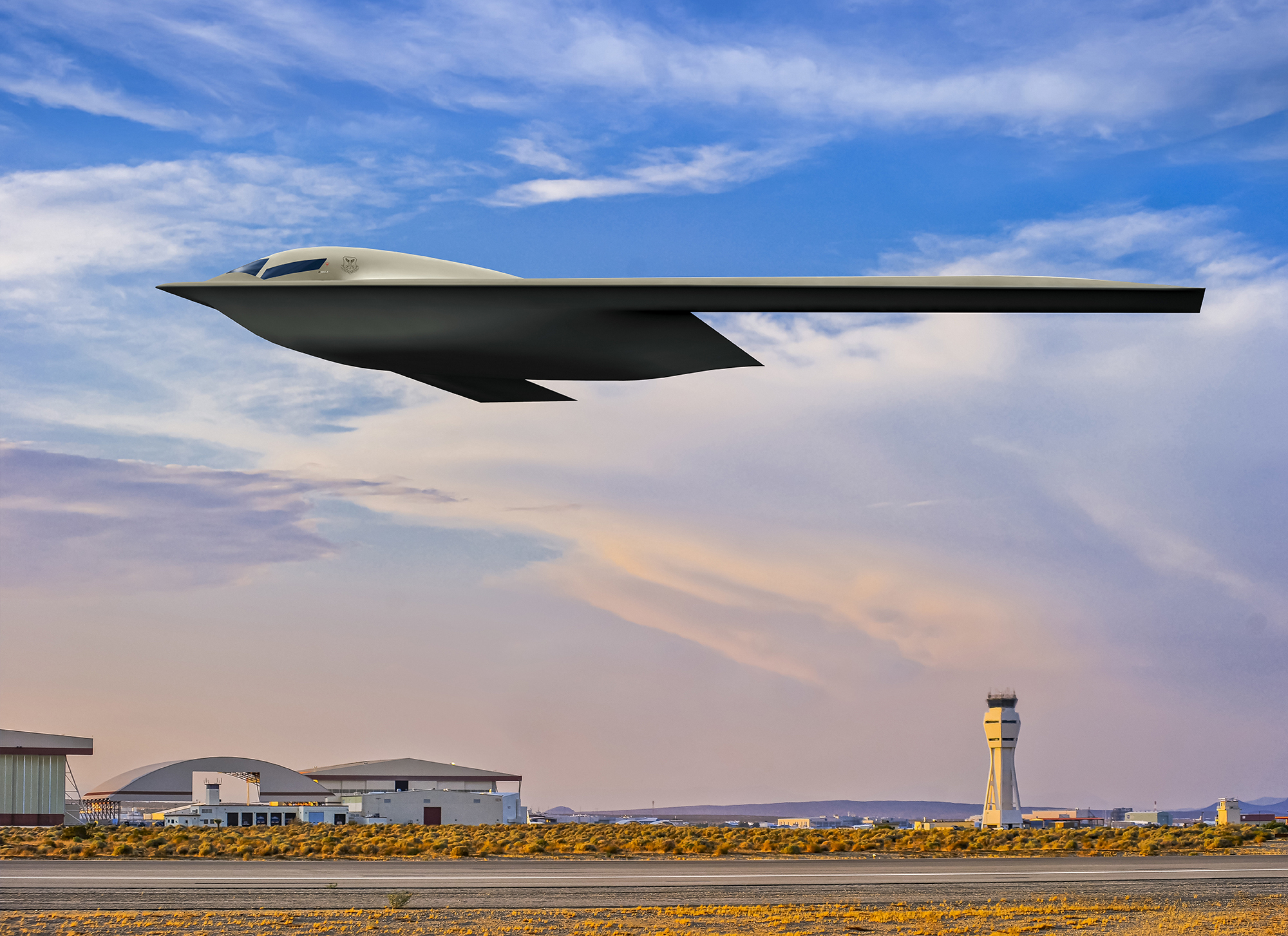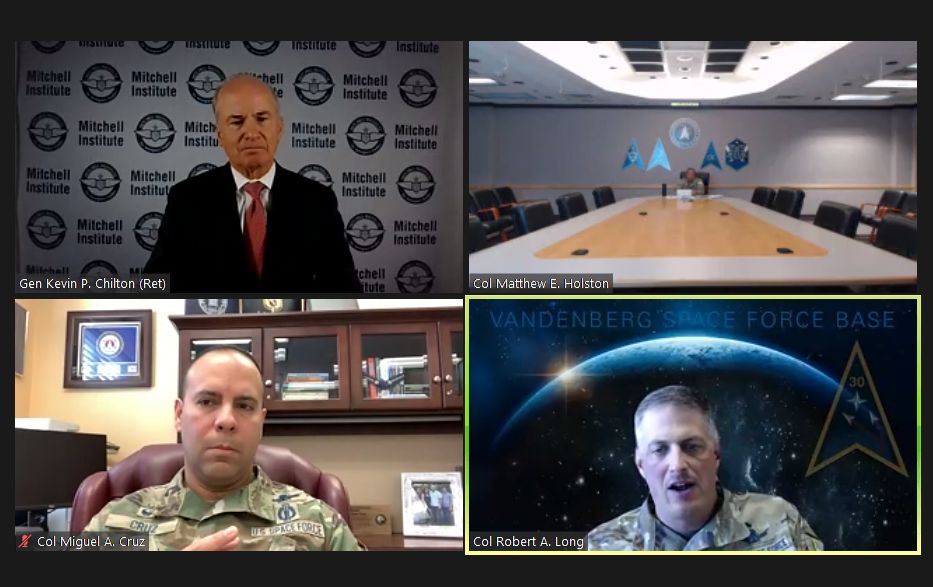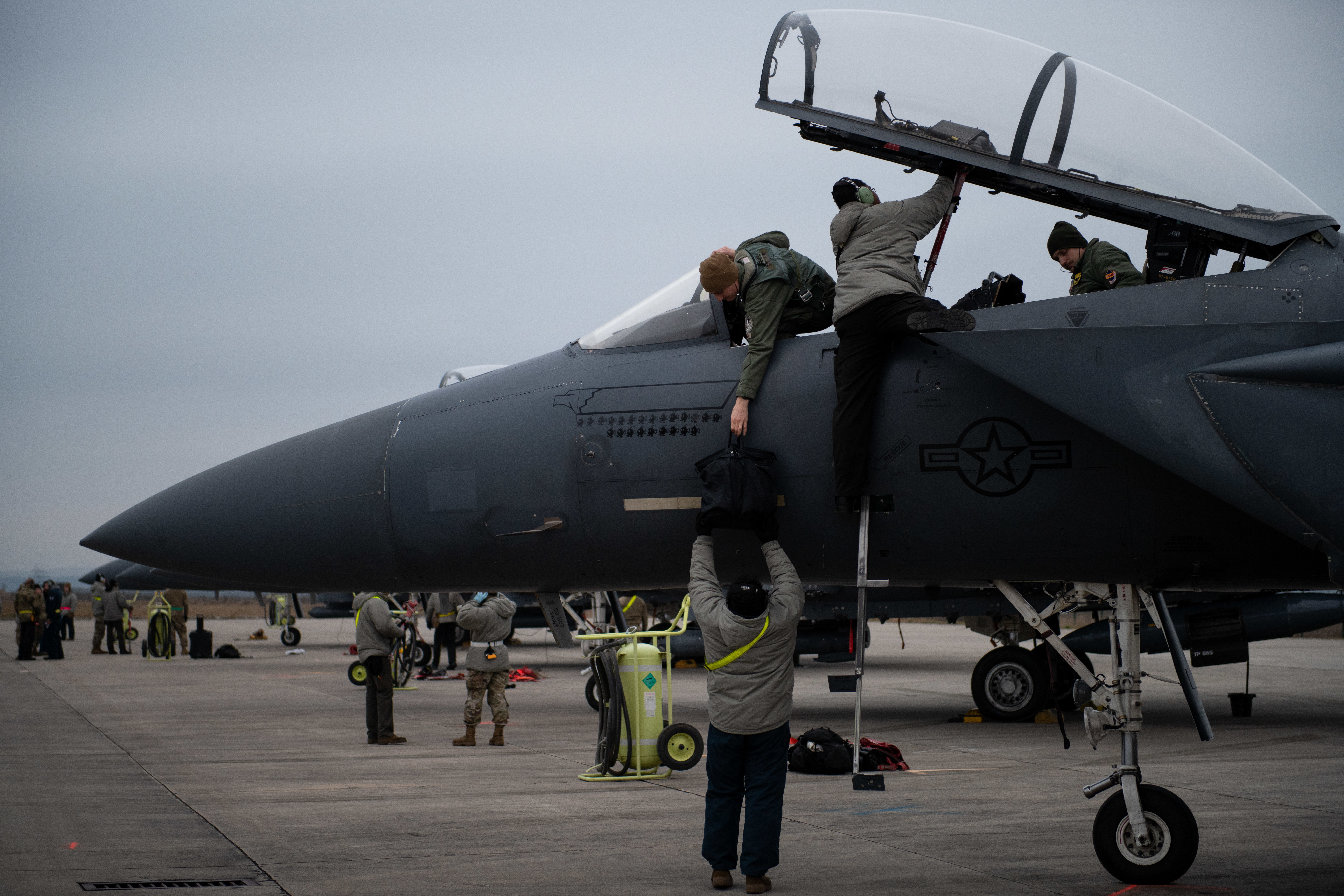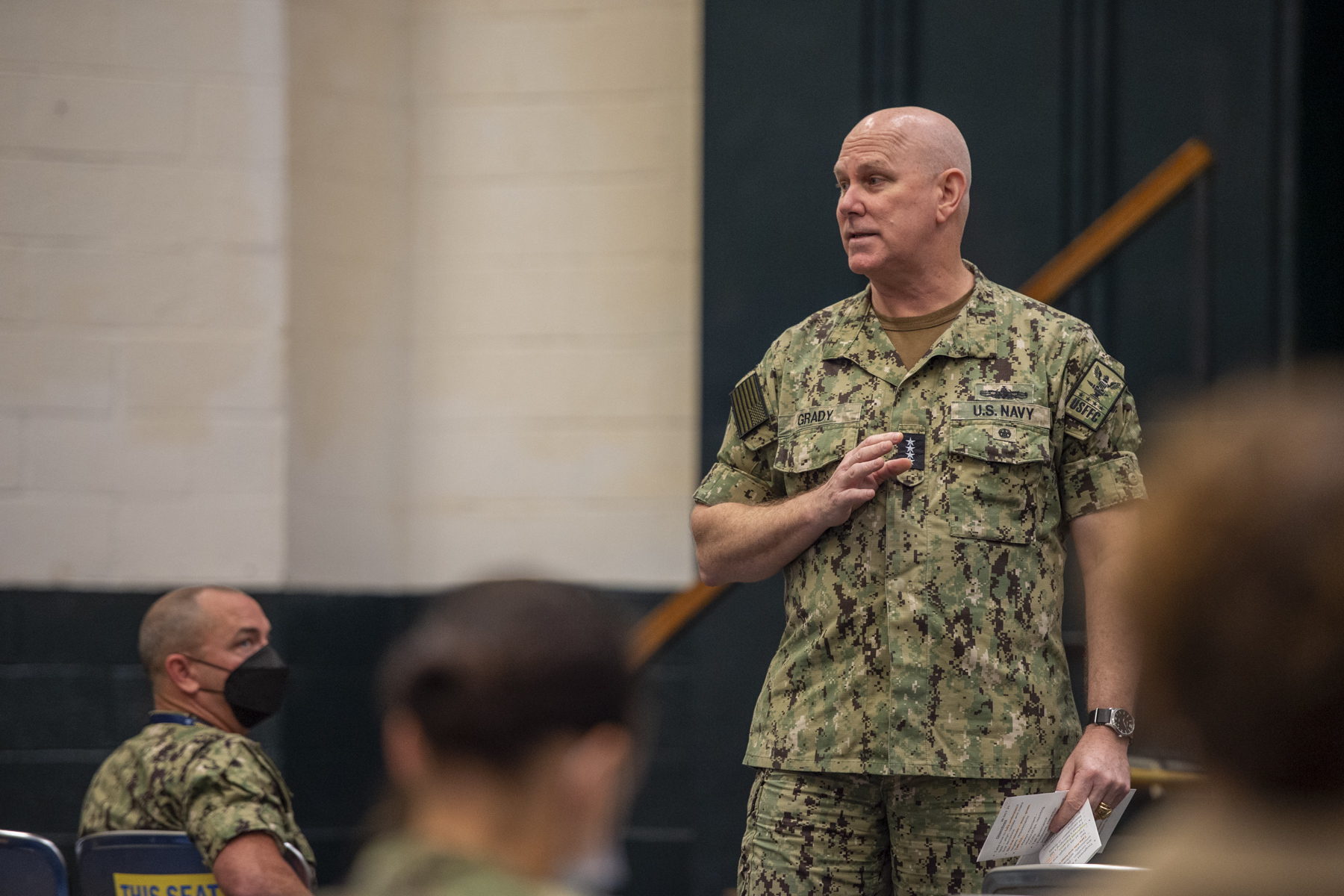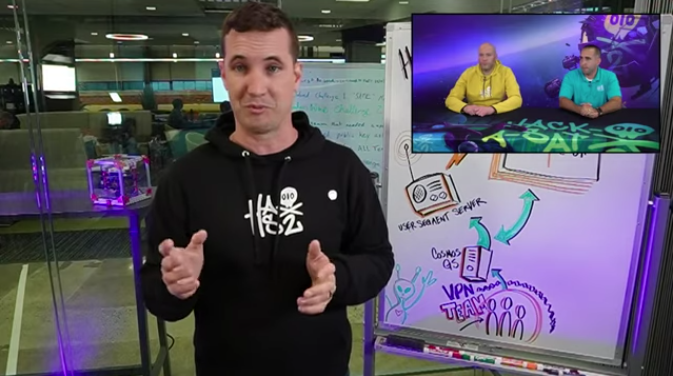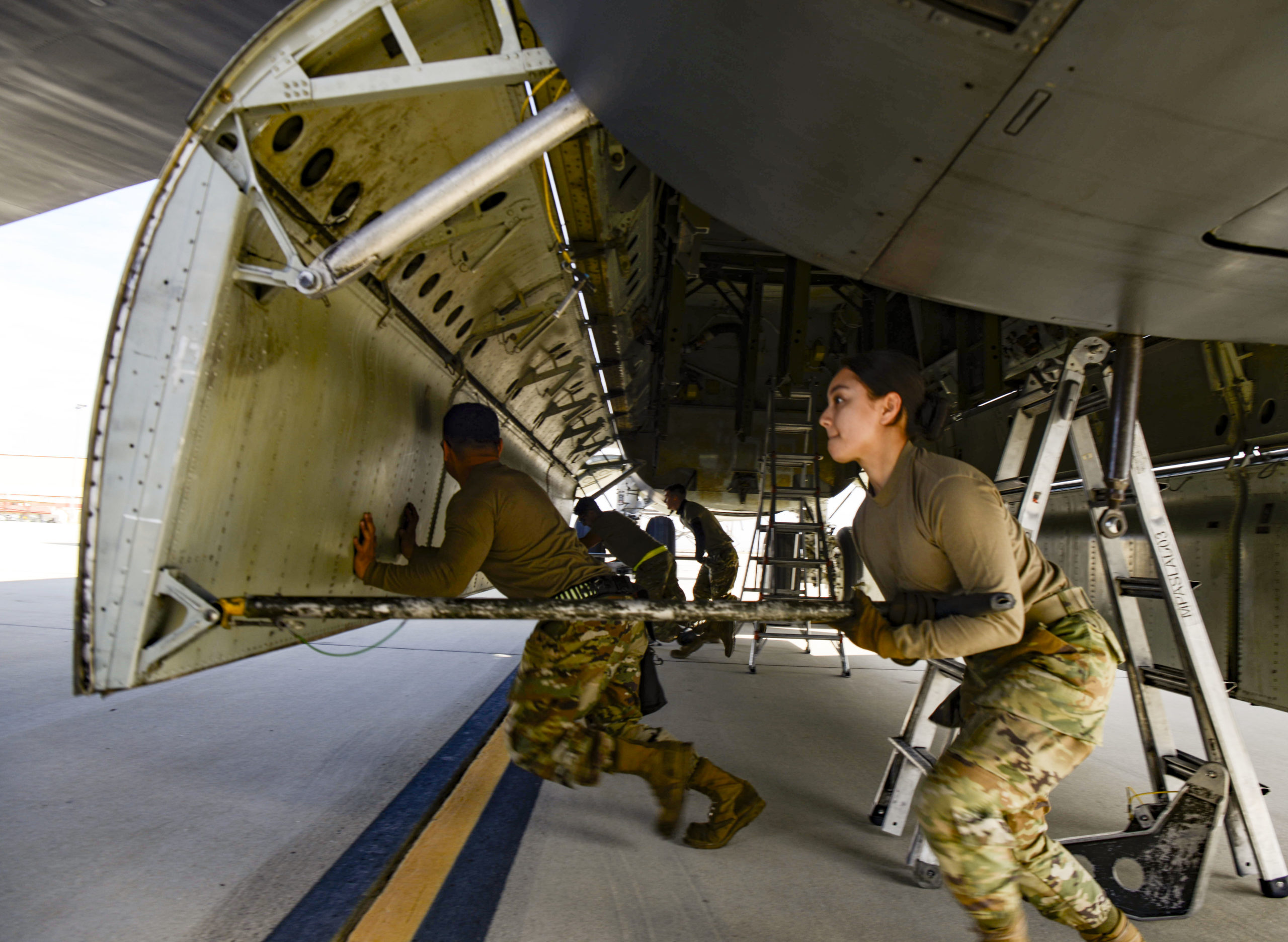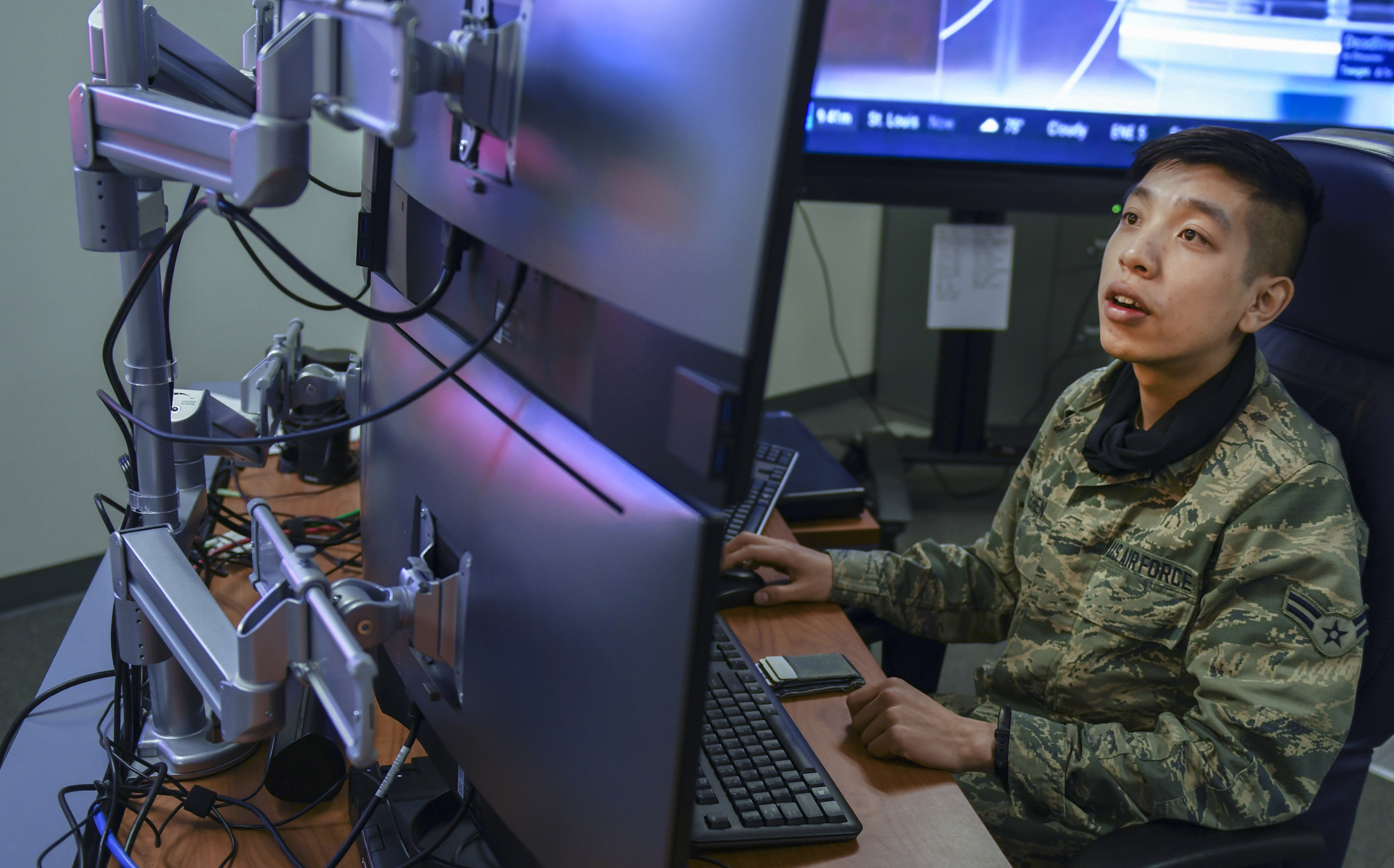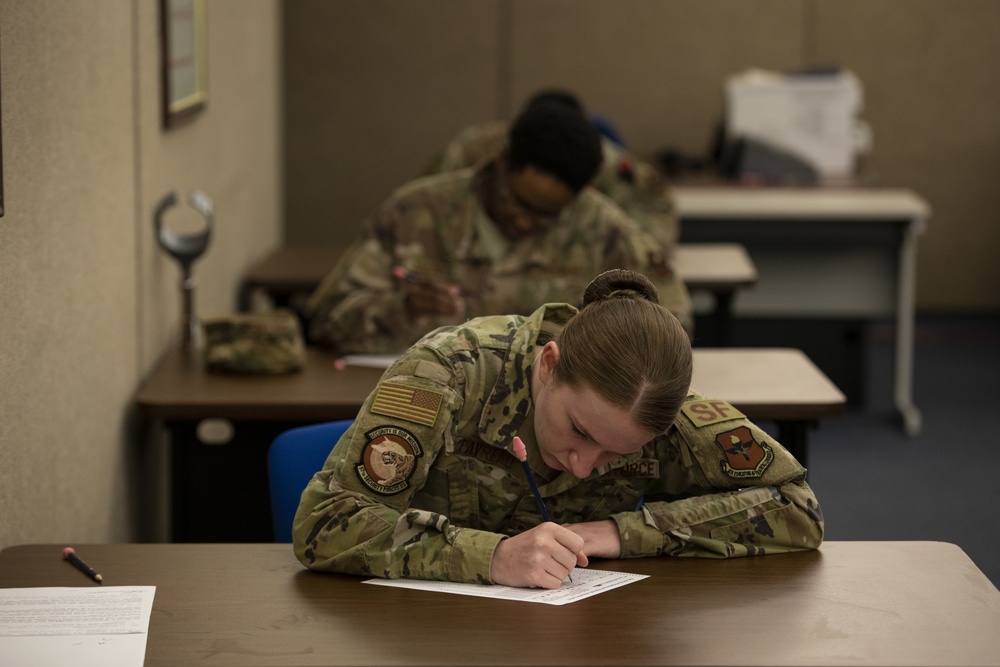A raft of strategy and posture reviews are coming in 2022 that will significantly shape the Air Force, even as the service is slated to make major strides on programs and conduct critical tests. How the Air Force manages to pay for all that as the bills come due for major modernization efforts, particularly in the nuclear arena, will be a challenging balancing act.
Early in the year, and possibly in conjunction with the fiscal 2023 budget request, the Biden administration will release its first all-up National Security Strategy and National Defense Strategy, which will set the conditions for USAF’s force structure. Little has been said about what it will entail. The interim NDS released by the Biden administration in March largely preserved the previous administration’s military philosophies but did away with President Donald Trump’s theme of “Great Power Competition,” replacing it with the more nebulous “Strategic Competition.” It will keep China front and center as the pacing U.S. military threat, with Russia a second but crucial included case and still the principal nuclear competitor to the U.S.
Likely at the same time, the Pentagon will roll out its Nuclear Posture Review and Missile Defense Review, setting the stage for how the Biden administration plans to apportion and modernize its strategic arsenal and counter rising threats from Russia’s “novel” nuclear weapons—such as Moscow’s tidal wave-generating nuclear torpedo—as well as Chinese and Russian hypersonic missiles and China’s nascent fractional orbital bombardment system. While the B-21 bomber and B-52 re-engining seem to have full support on Capitol Hill, the new Ground Based Strategic Deterrent intercontinental ballistic missile and Long Range Standoff Weapon still have their opponents, and the Nuclear Posture Review will be the first clear indication from the Biden administration of how supportive of these programs it will be.
These reviews will have a lot to do with how the Air Force is sized for the 2020s and beyond. Its force structure is likely to be somewhat different from that laid out in 2018’s “The Force We Need” notional Air Force of the future, which called for about a 25 percent increase in the size of the force to 386 combat squadrons. The shift to “high end” combat capabilities and away from counterinsurgency is likely to gain momentum, especially with the withdrawal from Afghanistan.
Aircraft
The Air Force is slated to make major program strides in 2022 as it reveals and flies the B-21 Raider for the first time and launches new program starts that will have great influence on how the service is organized for air combat.
The B-21 is slated to take to the air mid-year, its first flight likely a hop from Northrop Grumman’s facilities at Air Force Plant 42 in Palmdale, Calif., to nearby Edwards Air Force Base. Rapid Capabilities Office director Randall Walden predicted a year ago that the B-21 would roll out in the spring of 2022 and has only hedged a bit since then as pandemic delays slightly affected the program’s progress.
Although Walden said the rollout of the aircraft will be a public event, Air Force Secretary Frank Kendall has subsequently said much will still be kept under wraps to avoid giving China a “head start” in countering the B-21’s capabilities.
Walden has said five B-21s are under construction, suggesting that additional test aircraft will take to the sky in fairly short order. Expect funding for the bomber—which seems to have support from both sides of the aisle on Capitol Hill and which is regarded as a generally well-run effort—to shift significantly from developmental activities to production in the fiscal 2023 budget request.
New funding requests will also appear for “loyal wingman”-type autonomous, unmanned combat aircraft that will fly as escorts for fifth-generation fighters such as the F-22, F-35, and Next Generation Air Dominance platform, and for bombers such as the B-21, Kendall said. The aircraft programs will be “acknowledged classified,” meaning their funding streams will be public records, but little about them will be disclosed to preserve operational surprise.
Early in the year, the F-35 Joint Program Office and the Air Force owe Congress their plans for improving the fighter’s operating costs and mission capability rates as well as how to provide power for the fighter’s advanced Block 4 configuration. General Electric and Pratt & Whitney stand ready to build new-generation engines for the F-35 based on their prototype Advanced Engine Transition Program powerplants, but the Air Force would have to bear the whole cost of such development and production, as F-35B variant users cannot use the AETP engines and the Navy’s F-35C would need significant modification to accommodate the adaptive engine.
More may be revealed in 2022 about the Next Generation Air Dominance system, which will include a manned (and potentially unmanned) fighter, along with a family of related aircraft and attributes.
Expect the Air Force to make an even harder push to retire old, irrelevant or costly systems to free up money to develop advanced capabilities and for Congress to remain stubborn in holding onto old systems until new ones are in hand. The fiscal 2022 National Defense Authorization Act, for example, prohibits the Air Force from taking any steps to retire more B-1B bombers until they are being replaced, one for one, with B-21s.
Besides the two new “loyal wingman” programs of record—one to escort fighters and one for bombers—the Air Force will likely get formally underway on the new Advanced Tactical Trainer, a replacement for the T-38 in the lead-in-fighter/companion trainer role. It received information from industry on the art of the possible in November. The Air Force will likely partner with the Navy on this aircraft, and there could well be a memorandum of agreement for cost sharing or at least pledging high commonality. Boeing and Saab will offer a variant of their T-7A while Lockheed Martin will enter a variant of its T-50 trainer, which it developed in partnership with Korea Aerospace Industries. Other competitors that didn’t succeed in the T-X competition may enter as well.
Weapons
The Air Force is also under some pressure to get moving on its hypersonic missile programs. The AGM-183 Air-launched Rapid Response Weapon failed to fly on its own during 2021 over several attempts, making a fast-paced string of successful test flights in 2022 essential if the service is to enter production in 2023, as it plans to do. Likewise, there should be aggressive test flights of the Hypersonic Air-breathing Weapon Concept (HAWC), a Raytheon product that’s a precursor to the Hypersonic Attack Cruise Missile, an air-breathing Mach 5+ weapon that the Air Force would buy in even greater numbers than ARRW because it will be smaller and more can be loaded on bombers and fighters.
As the Air Force migrates away from the RQ-4 Global Hawk in the strategic reconnaissance role, look for more to be revealed about its stealthy successor, a high-flying stealthy unmanned aircraft that has been called the RQ-180.
While Kendall has indicated USAF will keep mum about new capabilities, flight testing of the new AIM-260 long-range, multimode-guidance air-to-air missile is likely to step up, as the service plans to field the first versions in the next couple of years. Little is known about the AIM-260, which is being developed by Lockheed Martin.
The Air Force will also sharply expand its agile combat employment exercises and experiments in 2022, with more aircraft deployed to austere locations with progressively smaller logistical footprints, supported by Airmen with multiple specialties. Hand in hand with that effort will be further refinement of the Advanced Battle Management System and the development of joint all-domain command and control, to wring as much combat capability out of USAF’s limited assets as possible.
Affording all of this, even with a defense budget at $768 billion, will be challenging. Look for USAF to take risk in budgeting by buying fewer munitions and accepting more tiered readiness. The Air Force seems poised to win approval from the Pentagon for its new system of presenting forces to combatant commanders, which will formalize unit downtime and stop what the service has called the “burning up” of its people and equipment on endless deployments without any opportunity for reset.
